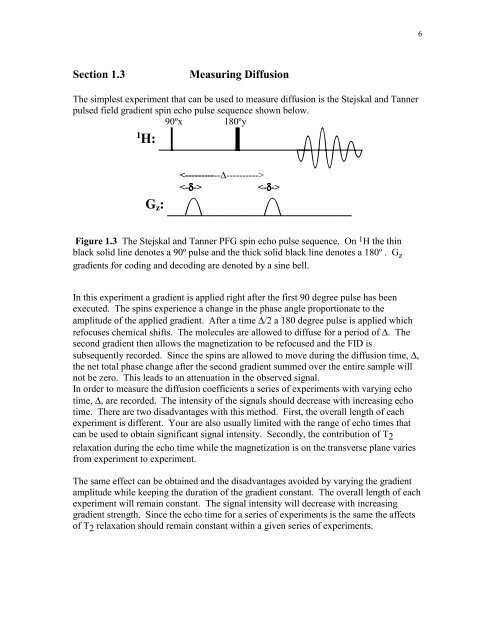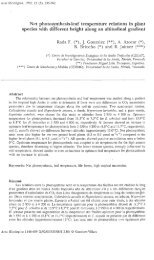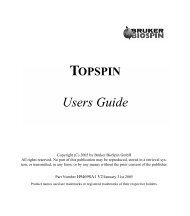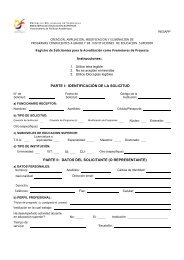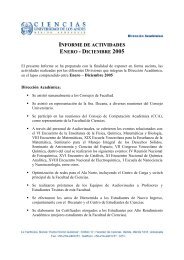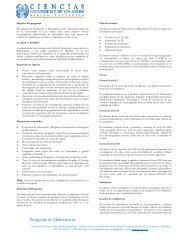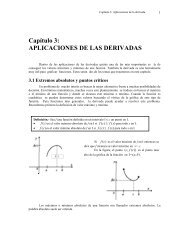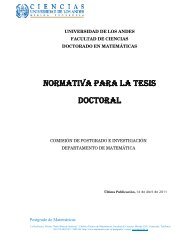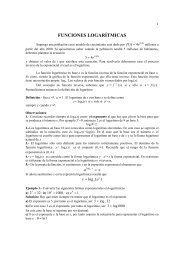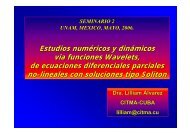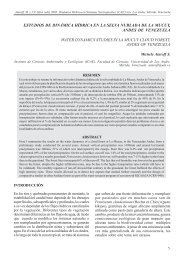Diffusion Manual Outline
Diffusion Manual Outline
Diffusion Manual Outline
You also want an ePaper? Increase the reach of your titles
YUMPU automatically turns print PDFs into web optimized ePapers that Google loves.
6<br />
Section 1.3<br />
Measuring <strong>Diffusion</strong><br />
The simplest experiment that can be used to measure diffusion is the Stejskal and Tanner<br />
pulsed field gradient spin echo pulse sequence shown below.<br />
90ºx 180ºy<br />
¾!VVV$VUVWO<br />
<br />
= <br />
ÅV²VUV²UUV<br />
Figure 1.3 The Stejskal and Tanner PFG spin echo pulse sequence. On 1 H the thin<br />
black solid line denotes a 90º pulse and the thick solid black line denotes a 180º . G z<br />
gradients for coding and decoding are denoted by a sine bell.<br />
In this experiment a gradient is applied right after the first 90 degree pulse has been<br />
executed. The spins experience a change in the phase angle proportionate to the<br />
amplitude of the applied gradient. After a time ∆/2 a 180 degree pulse is applied which<br />
refocuses chemical shifts. The molecules are allowed to diffuse for a period of ∆. The<br />
second gradient then allows the magnetization to be refocused and the FID is<br />
subsequently recorded. Since the spins are allowed to move during the diffusion time, ∆,<br />
the net total phase change after the second gradient summed over the entire sample will<br />
not be zero. This leads to an attenuation in the observed signal.<br />
In order to measure the diffusion coefficients a series of experiments with varying echo<br />
time, ∆,=are recorded. The intensity of the signals should decrease with increasing echo<br />
time. There are two disadvantages with this method. First, the overall length of each<br />
experiment is different. Your are also usually limited with the range of echo times that<br />
can be used to obtain significant signal intensity. Secondly, the contribution of T 2<br />
relaxation during the echo time while the magnetization is on the transverse plane varies<br />
from experiment to experiment.<br />
The same effect can be obtained and the disadvantages avoided by varying the gradient<br />
amplitude while keeping the duration of the gradient constant. The overall length of each<br />
experiment will remain constant. The signal intensity will decrease with increasing<br />
gradient strength. Since the echo time for a series of experiments is the same the affects<br />
of T 2 relaxation should remain constant within a given series of experiments.


